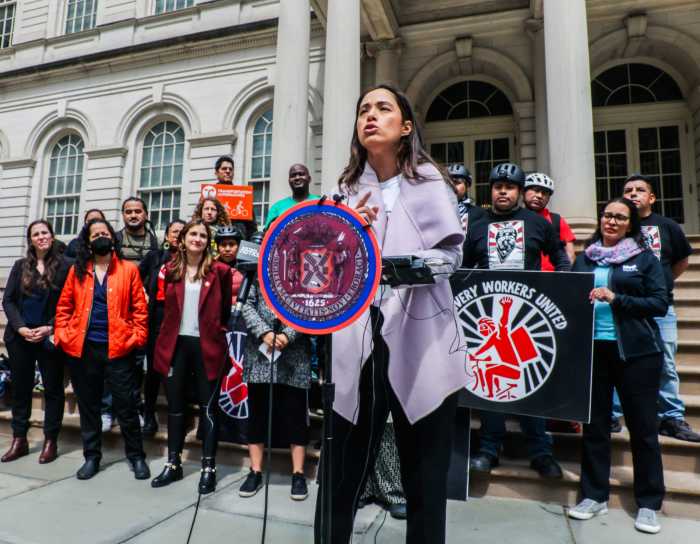
As college students gear up for the fall semester, they might be pinching pennies for their textbooks.
According to the Bureau of Labor Statistics, textbook costs have risen 88 percent over the last 10 years. Textbooks can cost upward of $400, and are often packaged with digital components that make it difficult to borrow, rent or buy used.
Textbook prices aren’t the only thing on the rise. The open educational resources (OER) movement has gained steam in recent years, as schools work to provide zero-textbook-cost courses.
It’s especially strong in community colleges such as Borough of Manhattan Community College (BMCC), within the City University of New York (CUNY). The school is an OER leader among CUNY schools, with the most faculty trained and converting the most courses to zero-textbook-cost, according to BMCC librarian Jean Amaral.
BMCC estimates it’s saved its students — 43% of whom have household incomes of less than $20,000 — close to $1 million in textbook fees so far. With more faculty training, that number is expected to increase to $3 million by fall 2018, Amaral said.
amNewYork spoke with Amaral about OER.
What is the OER training like for BMCC faculty?
The faculty might use open educational resources that are online and free, or they could use library resources. They’re choosing alternative learning resources that are at no cost to the student. We work with the faculty to do that legally. If they’re doing something under copyright, they have to know about copyright law. And we talk about pedagogy — we talk about how students learn. Often the faculty end up being more learner-centered when they go through our OER program. We’re not just about saving money in the end, but reinvigorating courses.
What’s an example where OER has improved the learning experience?
In an economics course, the faculty member used newspaper articles. She used videos that were on topic to create conversations with students. It was a more enriched course with all that content. They can use real-world content in the learning situation — not just a dry textbook. We surveyed our students — what are the benefits of zero-cost textbooks for them? We thought they were going to mention costs more often, but they didn’t — they mentioned accessible learning. You can access the material 24/7 on phones or tablets. Our students are working on their phones and tablets because they’re busy — they’re working, taking care of families. They talked about access and how access increased learning for them.
What challenges are there with OER?
It certainly takes a lot of time, and not every faculty member has the time to move from that complete textbook to the OER because they have to redesign their course. The faculty have to be creative, because depending on their discipline, there may be more or fewer resources. For the STEM disciplines there are lots of open educational resources out there. Other disciplines in the humanities can be a little more complicated, certainly for contemporary literature. It’s hard to do those courses when the literature is still copyrighted. And there are some courses that won’t be able to abandon textbooks, and that’s OK, too. Often they can find cheaper resources to work with. And then overall, the OER community across the country has to think about, how do we continually keep this up? One of the value adds from the publishers is you have editors who continually update the material. We know we have to figure that out.
How is BMCC engaged in the OER community?
I certainly keep up with it. For our faculty, it’s more of a challenge to get more involved. The community college faculty teach five courses in one semester, and four in another — that’s more than a full-time job right there. And they have to do research and publish scholarly work. I know our faculty would love to be involved with the community, but it’s very challenging for them to do that. One of the ways we’re trying to address that is finding a way for it to count toward their tenure and promotion. Because OER is fairly new, colleges haven’t caught up with making sure that’s a positive contribution to faculty members’ tenure and promotion profiles. We’re hoping to make progress on that over the next year or so.





































